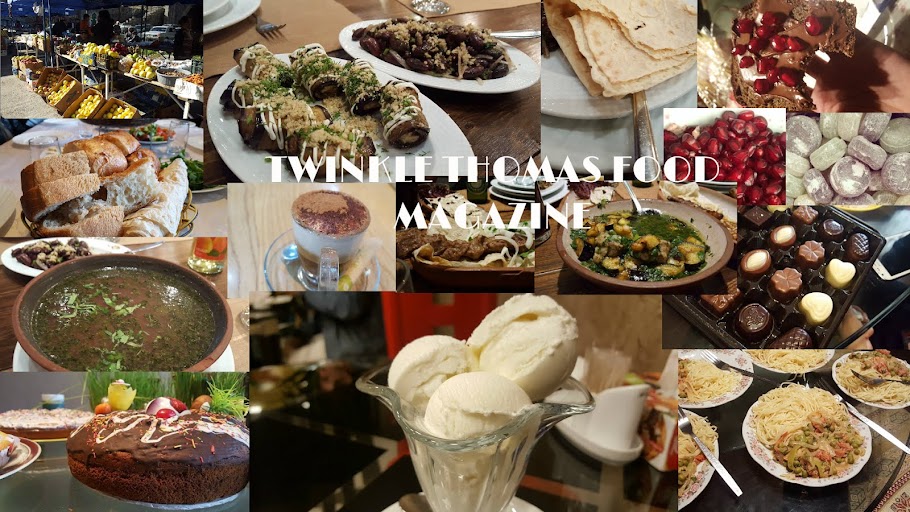 |
| IMAGE OWNER: SOUMYASHREE CHATTERJEE |
 |
| IMAGE OWNER: SOUMYASHREE CHATTERJEE |
 |
| IMAGE OWNER: SOUMYASHREE CHATTERJEE |
For a Bengali God’s gift to mankind has to be fish, followed
by rashogolla. Bengali cuisine while diverse in encompassing meat both fowl and
fur, and even some exemplary lip smacking vegetarian variety; it is with fish
that it transcends into an art. The brilliance of the Bengali mom to turn the
egg of fish into nuggets, or the gut into finger licking fried nuggets to be
savored with rice just shows how every part of the fish can be converted into
something that is excellent. So why not the otherwise inconsumable bones and
head. Voila they have a solution for you in the form of muri ghanto.
As the name suggests muri ghanto is a mish mash using the
fish head or muro. The dish is essentially a festive dish served for occasions
like baby showers, bachelor or bachelorette parties and such occasions of
gaiety. While the body of the fish is used for cooking a curry or gravy the
head is used with rice to make the delectable muri ghanto. Rohu or rui as it is
commonly called is the fish of choice for making this. This quintessentially
Bengali food has subsequently spawned variants as it has migrated to other
lands like Singapore and Malaysia. In
those lands the head of a red snapper is used to make a stew dish as against
the traditional Bengali dish being more of a mish mash dry preparation.
Muri ghanto is traditionally a dish that looks more like a
pilaf. It is typically made of the fish head, rice and potatoes. The inherent
moisture of the cooked rice gives the dish its juicy feel along with the
contents of the fish head which are often succulent. It’s a heady mix of spices
and hence finger licking good.
Unlike most dishes where we have to arrange for the main
element of the dish, the star of this dish is a wastage product of another
dish. The head of a rohu or a catla used to make some other dish is used to
make muri ghanto. All you need to check is that the size is big. The head of a
fish in excess of 1.5 kgs is sufficient for this though a 2 kg fish gives the
ideal size. The cooking involves a meticulous preparation of the pilaf and
usually about a 45 minute offer with a reasonable amount of difficulty
involved.
The various ingredients required for the cook making a portion
serving 4 are:
- Fish head of rui(rohu) or katol (catla)-1
- Mustard oil or cooking oil 6 tablespoons
- Basmati rice 100 gms
- Salt 1 teaspoon
- Turmeric powder ½ teaspoon
- Tomato 1
- Potato 2 large
- Onion2 medium
- Ginger garlic paste 2 tablespoon
- Green chilies 3
- Garam masala 1
- Bay leaves 2-3
- Ghee 1 table spoon
- Tablespoon cumin seed ½ tablespoon.
To begin preparation for this dish peel the potatoes and die
them into medium small cubes. Slice the onions and the tomatoes also. Now use a
mix of turmeric powder, salt and red chilli powder and coat the fish head
evenly. After leaving it for about 5 minutes to properly grip the surface deep
fry the head in mustard oil. Bengali fish tastes best with mustard oil and the
zing it provides. One the head is deep fried, remove from oil and keep aside to
cool. This is a very critical step in the cooking and the fish head has to be
cooked just right so that the inside still retains its juice while the outside
gets crispy. Once this cools, crush and break the head into smaller pieces and
set aside. Wash the rice thoroughly and set aside. Shallow fry the potato
pieces and set aside. We are now ready for the actual cook.
In a heavy pan or wok heat the oil. Again mustard oil is the
preferred cooking oil. Add salt to taste, a dash of sugar, bay leaves, green
chilli and cumin seeds to the heated oil, and sauté. Add the sliced onions and
fry till golden brown. Now add tomato and sauté for a few minutes. Add ginger
and garlic pastes and sauté for a few more minutes. To add a zing to the taste
a bit of green chilli paste may also be added now. Add the rice to the mix and
stir fry for about 5 minutes now. Add about half cup of water and cook for some
5 minutes occasionally stirring to ensure proper mixing. Now add the pieces of
the fried fish head to this mix and stir vigorously to ensure even mixing. Care
also needs to be taken to not further break the fish head. Add water to measure
about half a cup and then cover the pan letting the mix to cook for about 15
minutes. This would ensure that the potato and the rice are properly
cooked. Add a dash of ghee and evenly
spread Garam masala. Cook till the water dries off and transfer to a serving
vessel. This can be served on its own or with a serving of hot rice.
The diligence and love for everything fishy that Bengalis
display is show cased in this dish where even waste material is converted into
something inexplicably delicious. So in such a dish my mom’s secret ingredient
in cooking becomes that much more crucial. So add a generous dose of love, as
generous as a bongs need for adda, and a smile as big as the one he sports in
front of a sweet shop and make this dish turn on its fishy head. Bon appétit.

No comments:
Post a Comment